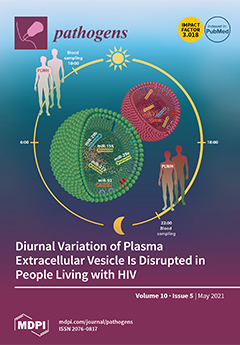Rifampicin (RIF) is one of the most important first-line anti-tuberculosis (TB) drugs, and more than 90% of RIF-resistant (RR)
Mycobacterium tuberculosis clinical isolates belong to multidrug-resistant (MDR) and extensively drug-resistant (XDR) TB. In order to identify specific candidate target proteins as diagnostic markers or drug targets, differential protein expression between drug-sensitive (DS) and drug-resistant (DR) strains remains to be investigated. In the present study, a label-free, quantitative proteomics technique was performed to compare the proteome of DS, RR, MDR, and XDR clinical strains. We found iniC, Rv2141c, folB, and Rv2561 were up-regulated in both RR and MDR strains, while fadE9, espB, espL, esxK, and Rv3175 were down-regulated in the three DR strains when compared to the DS strain. In addition, lprF, mce2R, mce2B, and Rv2627c were specifically expressed in the three DR strains, and 41 proteins were not detected in the DS strain. Functional category showed that these differentially expressed proteins were mainly involved in the cell wall and cell processes. When compared to the RR strain, Rv2272, smtB, lpqB, icd1, and folK were up-regulated, while esxK, PPE19, Rv1534, rpmI, ureA, tpx, mpt64, frr, Rv3678c, esxB, esxA, and espL were down-regulated in both MDR and XDR strains. Additionally, nrp, PPE3, mntH, Rv1188, Rv1473, nadB, PPE36, and sseA were specifically expressed in both MDR and XDR strains, whereas 292 proteins were not identified when compared to the RR strain. When compared between MDR and XDR strains, 52 proteins were up-regulated, while 45 proteins were down-regulated in the XDR strain. 316 proteins were especially expressed in the XDR strain, while 92 proteins were especially detected in the MDR strain. Protein interaction networks further revealed the mechanism of their involvement in virulence and drug resistance. Therefore, these differentially expressed proteins are of great significance for exploring effective control strategies of DR-TB.
Full article






